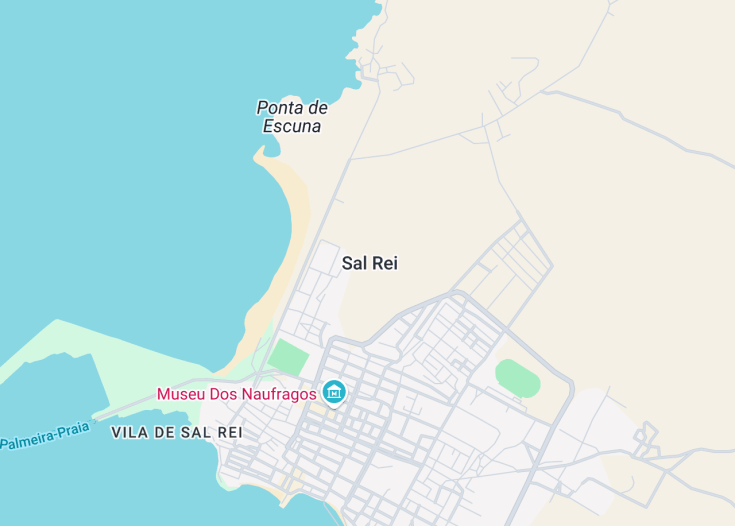Sal Rei, the capital of Boa Vista in Cape Verde, exudes a charming blend of laid-back island atmosphere and vibrant cultural heritage. Renowned for its pristine beaches and crystalline waters, this picturesque town offers a gateway to breathtaking landscapes and rich aquatic life.
Visitors can explore the local history through the iconic colonial architecture, enjoy fresh seafood at the bustling markets, or partake in a variety of water sports. Sal Rei serves as a serene yet invigorating destination for travelers seeking relaxation and adventure alike.
Before visiting Sal Rei, be sure to check the local festival calendar. Joining in festivities like the Praia de Cruz festival can enrich your cultural experience tremendously.
When planning a trip to Sal Rei, consider booking accommodations with sea views. Waking up to the sights of the Atlantic Ocean can truly elevate your island getaway.
Top things to do & see in Sal Rei
Select the following sights and activities to discover best tickets and tours available in Sal Rei.
Sal Rei: A Gateway to Tranquil Beauty
| Country | Cape Verde |
| Time in Sal Rei | GMT-1 |
| Language spoken | Portuguese |
| Population | 8,325 (source: 2020 census) |
| Currency | Cape Verdean Escudo (CVE) |
| Airports |
|
Sal Rei, the capital of Boa Vista in Cape Verde, strikes a perfect blend of cultural richness and serene landscapes. Originally a small fishing village, this charming town has seen a substantial development surge over the years, evolving into a vibrant tourist hub known for its breathtaking beaches and vibrant music scene. The town’s architecture reflects a blend of African and Portuguese influences, visible in its colorful buildings and picturesque streets that lead to expansive, tranquil beaches.
Despite its growth, Sal Rei retains a laid-back vibe with a slow-paced lifestyle that captivates visitors. The town square, with its shops and cafes, is a vibrant meeting place for both locals and tourists. The nearby beaches, such as Praia de Chaves and Praia de Estoril, offer powdery white sands and crystal-clear waters, making them ideal for sunbathing, swimming, and water sports. The local economy thrives on fishing, salt collection, and increasingly on tourism, with a focus on eco-friendly practices to preserve its pristine natural settings.
Sal Rei is also known for its cultural significance. The town hosts several festivals throughout the year, including the famous Carnaval, which features a lively parade with music, dancing, and elaborate costumes that showcase the rich cultural heritage of Cape Verde. Moreover, the local cuisine, with its emphasis on freshly caught seafood and unique Creole influences, offers a tasty exploration of the island’s culinary delights.
The town’s commitment to sustainable development is visible in local initiatives that aim to balance growth with environmental stewardship. Efforts are being made to enhance tourist facilities while ensuring that the natural beauty of the island remains untouched.
Sal Rei is not just a destination but an experience that offers peace, beauty, and a warm welcome from its people, making it a perfect getaway for those looking to explore the unique blend of African and Portuguese cultures amidst stunning natural landscapes.
Where is Sal Rei?
Located on the northwestern coast of Boa Vista Island in Cape Verde, Sal Rei is renowned for its superb coastal beauty and cultural history.
Distances:
| Route | Distance by car | Time by car |
|---|---|---|
| Praia to Sal Rei | 130 miles | 2 hours 45 mins |
What is Sal Rei famous for?
Sal Rei is celebrated for its stunning beaches, vibrant cultural festivals like Carnaval, and a unique blend of Portuguese and African influences embedded in its daily life and architecture.
History
Pre-Colonial Era (Before 15th Century)
The area now known as Sal Rei was originally inhabited by nomadic tribes who utilized the island’s resources for fishing and salt collection. Little is known about early settlements prior to European discovery, largely due to the absence of written records from these times.
Colonial Era (15th Century – 1975)
Sal Rei’s history as a recognized locality began with its discovery by Portuguese explorers in the 15th century. The archipelago, including Sal Rei, officially became part of the Portuguese Empire., which started using the islands as a center for the salt trade. Over the centuries, Sal Rei grew modestly under Portuguese rule, despite the harsh living conditions and limited fresh water resources. In the 19th century, the town became officially known as Sal Rei, which translates to “Salt King,” reflecting its dominant economic activity. During this period, the population grew slightly with the influx of Portuguese and other settlers.
Post-Independence Era (1975 – Present)
Following the independence of Cape Verde from Portugal in 1975, Sal Rei experienced gradual development. The town began to modernize, though its growth was still constrained by its geographic isolation and limited natural resources. In recent years, Sal Rei has begun to harness its potential as a tourist destination, focusing on its beautiful beaches and unique cultural heritage. The economy has increasingly diversified, moving somewhat away from traditional salt extraction to services and tourism.
Visit Sal Rei
What to see and do in Sal Rei, Cape Verde
Sal Rei, the tranquil capital of Boa Vista Island in Cape Verde, offers a mix of natural beauty and cultural experiences. Visitors can explore stunning beaches such as Praia de Chaves and Praia de Estoril, ideal for sunbathing and water sports.
The town center is home to charming colonial architecture, including the Church of Santa Isabel. For a taste of local life, the Mercado Municipal offers vibrant stalls full of fresh produce and artisanal goods.
- Praia de Chaves – Sunbathing and water activities
- Praia de Estoril – Ideal for windsurfing and kitesurfing
- Church of Santa Isabel – Historical site with beautiful architecture
- Mercado Municipal – Local market for a cultural experience
Festivals and Events in Sal Rei
Sal Rei hosts several cultural festivals and events throughout the year, bringing to life the rich traditions of the island. Notable among these is the annual Music Festival on the beach, usually held in September, which features local and international artists.
Another significant event is the Carnaval, celebrated with great enthusiasm every February, showcasing colorful parades and lively music that reflect Cape Verdean culture.
Best time to visit Sal Rei
The ideal time to visit Sal Rei is between November and June, when the weather is pleasant, and the risk of rain is minimal. This period also aligns with the town’s lively cultural festivities, providing visitors with an enriching experience of local traditions and celebrations.
Is Sal Rei worth visiting?
Sal Rei is certainly worth visiting, offering a unique blend of natural beauty, cultural richness, and a relaxed atmosphere. Its expansive sandy beaches, coupled with the island’s cultural events, provide a compelling reason to visit.
Whether you are looking to unwind by the sea, experience vibrant local festivals, or explore historical sites, Sal Rei presents an alluring destination that caters to a variety of interests.









